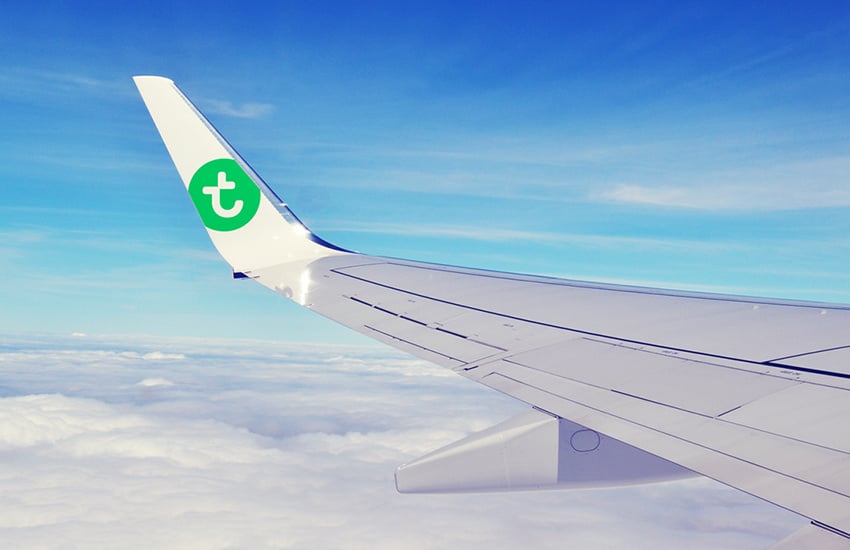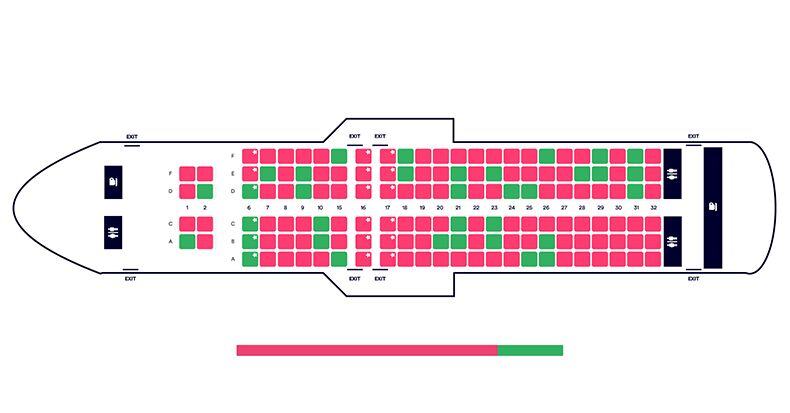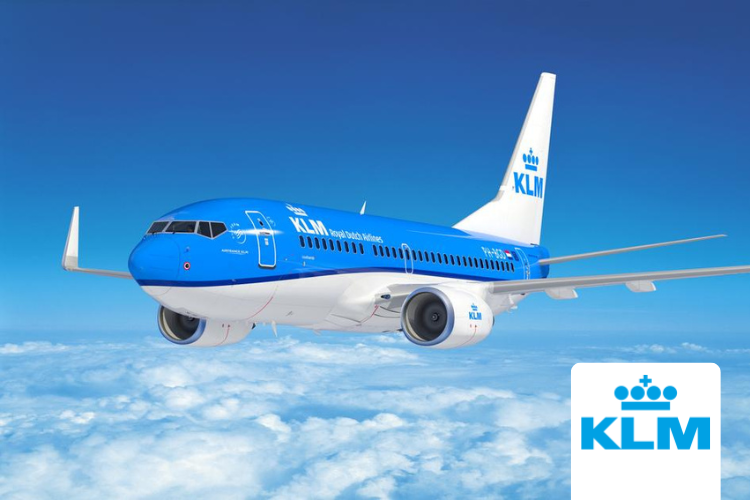Customer Data Platform Case Study
Transavia Overhauls Customer Journey and Wins Big with Relay42 Platform

+50%
Saved on display retargeting spend
Working for a low-cost airline like Transavia means being innovative, goal-oriented and quick on your feet. And when you’re in marketing, it means knowing when to let people do the work, and when to introduce martech to help you gain the insights you need and automate processes and reach higher targets more efficiently.
In this article, Pelle den Engelsman, Campaign Strategist at Transavia, gives us an insider’s look at how adopting the Relay42 platform is helping Transavia streamline their display advertising, save marketing budget, and optimize their customer experience.
The Airlines CDP Use Case for Transavia
Competing in a tough market
Every solution begins with a challenge. For Pelle’s team, one of those challenges was finding a way to ensure the Transavia brand would continue to stand out in a crowded marketplace.
“We’re working in a difficult market,” admits Pelle. “There are a lot of active low-cost airlines. Ticket prices are always under pressure in this highly competitive market; so every year we strive for improved results (comparing to previous years) with strict limitations on resources. Therefore we have to be smarter and more efficient in all the things we do, including advertising.”
‘Smarter advertising,’ it would turn out, meant much more to Pelle than simply achieving more with less. It also meant becoming better at taking the needs and desires of the person on the other side of the ad into account.
Shifting customer needs
It was clear to Pelle, as it is to many marketers who are tasked with reaching out to customers via advertising, that customer needs have shifted drastically.
“We can’t work with a one-to-many marketing program,” he stresses, “because it’s just not relevant anymore. People find it irritating, they leave, and the campaigns aren’t effective. So we have to shift our advertising based on customer needs. Maybe we shouldn’t even call it advertising anymore, but just offering the right message at the right moment. You always have to be spot-on for the customer.”
Shifting to a more customer-centric marketing approach would mean making decisions based on the context of the customer in the moment. “Knowing, for example, where someone physically is at a given moment, combined with where the user is in the customer journey, is a really important deciding factor in the message you want to display. You have to understand the customer’s context in order to present them with the most relevant offer,” Pelle emphasizes.
Like many companies, Transavia was already focused on taking a data-driven approach to achieve more effective marketing outcomes. And also like many companies, they were struggling to unify their data and make it fully actionable in real time.
Filling in the gaps in customer data
The biggest costs for Pelle’s team came from paid channels, and that’s where they were missing the data link. They could send targeted emails to known customers, for example, but they had few to no options for engaging prospects based on relevant data. With the average customer booking only one to two flights a year, they didn’t have much to go off of. They knew that a booking from a year or two ago often said very little about what the customer was looking for now, and they needed a platform to help them fill that data gap.
“We had a lot of data and were present on all of the channels where we wanted to be, but we weren’t able to recognize customers across all touchpoints,” Pelle explains.
Reducing manual work and optimizing campaign budgets
Finally, Pelle knew that he and his team were doing a lot of manual work that could — and should — be automated. “When you do everything manually, you know there’s a lot of room to optimize your marketing campaigns. So there was a huge cost-saving component in our decision to go with Relay42. We wanted to streamline our campaign budget and increase revenue through smarter advertising — a goal that is also completely in line with the goals of the organization: higher revenue against lower costs. A lot of the use cases we write are based on that.”
With that in mind, Pelle and his team made the decision to get started with the Relay42 platform. They knew that other airlines were already using the platform to great success, and it was clear to them from the beginning that Relay42 would be the best platform to help them achieve their goals.
50% save on display retargeting spend with first use case to streamline display ads
After a short 3-month onboarding period, Pelle and his team were ready to start tackling their business objectives. The goal of Transavia’s first use case? To streamline their display budget.
The current scenario was that someone would search for a flight on the Transavia website, and then they would be retargeted for that flight. In practice, this meant Transavia was displaying an average of more than a dozen banner impressions per person over a two-week timeframe.
The hypothesis was that they could achieve more with less — in other words, they would get the same results with fewer banner impressions.
Pelle set up an experiment in Relay42 with 9 test groups. Each group had a different frequency cap and CPM bid setting, and every customer would be randomly put in one of the groups to see which combination of CPM bid and frequency cap was optimal. It took just two months from the initial concept to yield clear results.
Pelle and his team quickly learned that they should not adjust the CPM bid too much, because if they did, the CPM bid would be lower than the threshold in order to be shown. In other words, if the CPM bid was too low they would lose a lot of auctions. This would lead to a severe decrease in banner impressions and finally result in the ads not being shown at all. They also learned that they could display half the number of banner impressions and still have the same conversion outcome.
"We’re now saving almost 50% on our retargeting budget a year with our first Relay42 use case alone," Pelle confirms.
“A lot of people will ask, ‘Do you really need Relay42 for this?’ And the answer is no. You could do it manually, but then you’re making life really difficult for yourself. There is so much complexity in building audiences, creating line items, etc., so I’m happy we had Relay42 to help us with this. The first use case was a huge success because of Relay42. We have more conversions against lower costs, and that makes everyone happy.”

Increasing Load Factor
Pelle goes on to explain that the plan was to start simple and build up from there: “So far, our cases have been simple ones that deliver results quickly. The load factor case is our biggest one up until now, and it’s a great one for the airline industry – I don’t think there are many airlines out there that have been able to do this.”
It was with this quick-win philosophy that Pelle’s team tackled their next big goal to maximize load factor.
“If you think about it,” Pelle considers, “we have a really strange product. We have an airplane that will leave at a certain time — there are 190 seats available in it, and we need to make sure that the plane leaves as full as possible in the most cost-efficient way. In an ideal world, every plane would leave with all of the seats filled with passengers, and we would only have to put in just enough marketing effort to help this happen.”
Transavia’s revenue management team utilizes a vast range of data — from historical booking data to current event data and weather data — which is accumulated in a tool that rates every flight’s load factor and plots it on a curve to see whether it is above or below their load factor target on a time axis. With this data available on all flights, it becomes clear which flights (on which dates) need more attention in terms of selling tickets.
With around 30,000 flights in the system at any given moment, however, integrating such a database with marketing software seemed out of reach. Pelle explains that revenue management systems are systems that bring all kinds of legacy challenges with them, so it’s usually difficult to integrate them with marketing systems.
“It’s not always about saving a lot of money or driving a lot of extra revenue. Sometimes it’s just about removing an annoyance for your customers. It’s about thinking just a little bit more about the person in front of you, and about whether this is the best way to reach that person.”
Pelle den Engelsman
Campaign Strategist at Transavia
Pelle’s idea was to use Relay42 to integrate the revenue management system with their display network. “Every day we receive an updated list from the revenue management system with all flights and their current load factor score that rolled out of the revenue management models. From that list, we focus on the flights that currently need attention (the flights with a low load factor score). Then we search through the Relay42 database and look for user profiles that searched for flights similar to the flights that have a low load factor today.
“If a user searched the Transavia website for a flight in the past which shows up on our ‘low load factor score’ list today, we will target the user via display to promote that flight with a discounted price. On the other hand, if a flight is filling up and doesn’t need extra attention, we don’t bother pushing it.
“There is a lot of room for nuance in this setup, but at the end of the day, flights that don’t need to be pushed won’t be — even if people are searching for them. Then we can use the budget we save by not pushing those flights to give our underperforming flights an extra boost.”
It turns out that only about 20% of flights being searched for actually require an above-average push. Thanks to this insight, and the ability to adjust display advertising based on real-time data, Transavia has already seen a drastic increase in their ROAS (return on advertising spend).
Improving newsletter relevancy with website activity data
Of course, “It’s not always about saving a lot of money or driving a lot of extra revenue,” says Pelle. “Sometimes it’s just about removing an annoyance for your customers. It’s about thinking just a little bit more about the person in front of you, and about whether this is the best way to reach that person.”
So Pelle went to work reducing tiny annoyances that make a big difference for some customers. One great example is the way he is now using Relay42 to personalize the Transavia newsletter based on website activity.
Transavia sends out a weekly newsletter with new offers and deals for their customers. In the past, it was a standard, one-size-fits-all newsletter — not for lack of wanting to personalize the content, but rather for the technical inability to do so. Now that they have unified customer profiles, however, Transavia is able to personalize newsletters to highlight destinations that customers have been searching for on the website.
They have also been able to adjust their email flow to be more customer-centric. According to Pelle, they had a rule in place to send a standard re-engagement email to newsletter subscribers who hadn’t opened a newsletter in the last 6 months. It wasn’t entirely uncommon, however, to get confused responses from customers who had recently booked a flight with the airline. Transavia was inadvertently telling active customers that they missed them, simply because their website data wasn’t connected with their newsletter database.
Now that Transavia is able to unify website data with their email database, Pelle’s team has been able to adjust this messaging to better suit their customers’ most recent actions. “As soon as you get Relay42, you suddenly have possibilities that weren’t there before,” says Pelle. “It sounds really simple, but if those channels aren’t integrated or monitored from one system, then you just don’t know… so you’re going to drive each channel on its own.”
“As soon as you get Relay42, you suddenly have possibilities that weren’t there before. It sounds really simple, but if [your] channels aren’t integrated or monitored from one system, then you just don’t know… so you’re going to drive each channel on its own.”
Pelle den Engelsman
Campaign Strategist at Transavia
“It doesn’t take a lot of time or effort to improve the customer experience in this way either,” adds Pelle. “I can do something like this in just 10 minutes, even just as a regular marketer without a lot of technical prowess, and for me, that’s a huge strength of Relay42. I think that a lot of companies don’t always realize that these kinds of simple use cases work for everyone — anyone can do it.”
Unifying the customer journey
So what’s next for Transavia and Relay42?
Pelle is looking forward to bringing a greater cross-departmental focus on improving the customer journey. “If we look at the customer journey from orientation to returning from their flight, we have multiple teams working on different phases of the journey,” Pelle explains.
With one team focusing on the orientation phase, another responsible for optimizing the booking flow, and another working on the customer experience after the booking has been made, it’s become clear that there’s no real internal transfer from one team to another per customer.
That’s why Transavia is looking at creating a team that knows exactly which steps the customer has made throughout the entire journey — what they enjoyed in the past, what their preferred channels are, what their travel tendencies are — so they can get the entire journey in scope.
“We’ll be focusing on really getting the full view of the journey and figuring out how to engage perfectly with the customer at every step along the way. It’s a huge project, and we’re going to do it in many small phases, but that is the focus. It’s the perfect moment to pick this up.”
This is just the beginning for Transavia. Pelle and his team have big plans for the coming years that are sure to help the company increase their competitive edge, do more with less, and most importantly, build even stronger relationships with their customers.
Driving Marketing Growth Value for Inspiring Brands

+115% Conversion Rate Uplift on Brand Search
Levi's Strauss & Co.

+25% In revenue via email marketing
KLM Royal Dutch Airlines
.png?width=750&height=500&name=Untitled%20design%20(28).png)
+272.75% Increase in the number of vacancy alerts
Randstad
.png?width=750&height=500&name=Untitled%20design%20(25).png)
+86% Increase in leads
Vattenfall
.png?width=750&height=500&name=Untitled%20design%20(27).png)
+90% Increase in requests for information
Mazda Netherlands
See Relay42 in Action
Experience a first-hand tour of the Relay42 Customer Data Platform with one of our consultants


